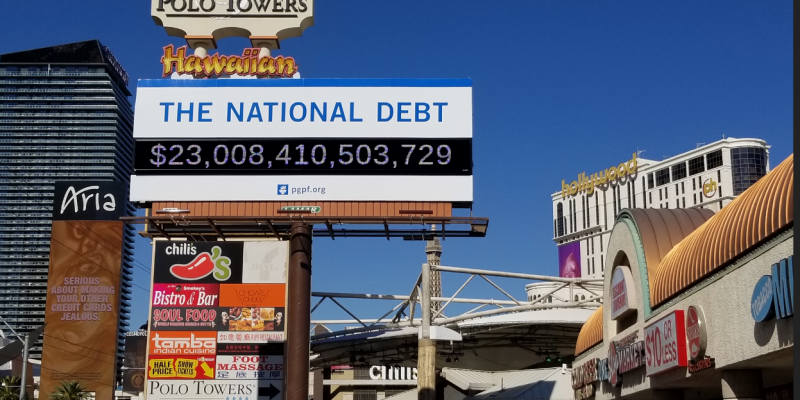The national debt has surpassed $23 trillion for the second time, adding $4.1 billion in one week. It broke the $23 trillion mark on Nov. 1 for the time in history, barely nine months after the debt broke records surpassing $22 trillion on Feb. 11. The debt has grown some 16 percent since President Donald Trump’s inauguration, when it stood at $19.9 trillion.
Of the $23 trillion, $16.98 trillion is debt held by the public and $6 trillion to intergovernmental holdings.
Despite record highs in the stock market, a booming economy, record jobs and employment reports, and the longest economic expansion since the post–World War II era, “Washington shows no fear,” Michael A. Peterson, CEO of the fiscally conservative Peter G. Peterson Foundation (PGPF) said in a statement. “Piling on debt like this is especially unwise and unnecessary in a strong economy.”
In order to pay off the national debt, every person in the U.S. would owe about $69,728, according to the PGPF debt calculator.
Every day, the U.S. spends $1 billion on interest. Over the next 10 years, the Congressional Budget Office (CBO) estimates that interest costs will total $5.8 trillion under current law.
As interest rates continue to rise, the cost to borrow will also increase, the CBO adds. By 2049, CBO projects that interest costs could be more than double what the federal government has historically spent on research and development, non-defense infrastructure, and education combined. Higher interest rates resulting from increased federal borrowing will also make it harder for families to buy homes, finance car payments, or pay for college, the PGPF notes.
According to a recent PGPF poll, 92 percent of Republicans and Democrats agree that managing the debt is critical to sustaining the future of the U.S. Strong majorities agreed reducing the debt will make the economy more stable, increase the country’s ability to invest in infrastructure, education, national security, and improve healthcare.
The first recorded public debt was in 1783 of $43 million.
The U.S. national debt has generally multiplied after experiencing major wars.
The first time public debt surpassed the billion-dollar mark was after the Civil War in 1865, totaling $2.6 billion. It had been $64.8 million just five years earlier.
In 1914, before World War I, the national debt was $2.9 billion. Five years later, after the First World War, it was $27.3 billion.
Before World War II, in 1939, the national debt was $40.4 billion. By 1946, it was $269.4 billion after the war’s end.
Debt held by the public is expected to reach $27.3 trillion by the end of 2027, according to CBO. This figure excludes debt issued to government accounts like Social Security trust funds. If they were included, the total debt would exceed $30 trillion by the end of 2027.
This article was first published by The Center Square.
Advertisement
Advertisement

